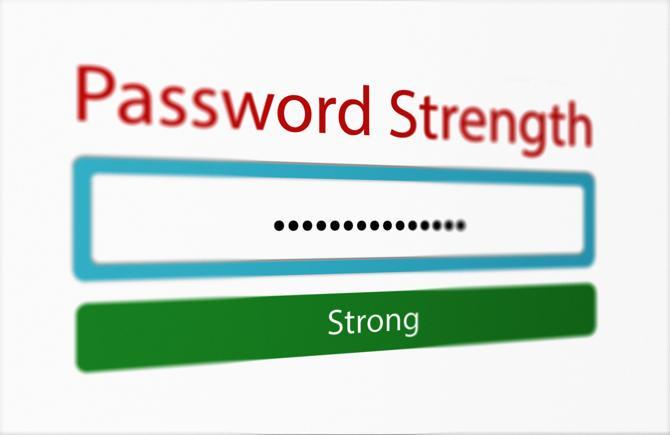In today’s digitally-driven world, the threat of identity theft looms large, affecting millions of individuals each year.
The repercussions of such breaches can be devastating, leading to financial loss, reputational damage, and a long, arduous recovery process.
Protecting your digital identity is not just advisable; it’s imperative. This article delineates five crucial steps individuals and organizations can take to fortify their digital security against identity theft, ensuring that personal and sensitive information remains secure.
Use Strong, Unique Passwords
One of the foundational steps in safeguarding digital security is creating and managing strong, unique passwords. A robust password is the first line of defense against unauthorized access to your personal accounts and sensitive information.
- Creating Strong Passwords: A strong password should be at least 12 characters long, incorporating a mix of letters (both uppercase and lowercase), numbers, and symbols. Avoid using easily guessable information, such as birthdays, names, or common words. Instead, opt for a random combination or a passphrase that is meaningful only to you.
- Password Management: Managing a plethora of strong passwords can be daunting. A reputable password manager can simplify this process by securely storing and auto-filling your passwords across different sites and applications. Additionally, ensure that you regularly update your passwords, especially for accounts with sensitive information, and never reuse passwords across multiple accounts.
Enable Two-Factor Authentication (2FA)
Two-factor authentication adds an extra layer of security by requiring two forms of identification before granting access to an account. This method significantly reduces the risk of identity theft, even if a password is compromised.
- Implementation of 2FA: Most online services offer the option to enable 2FA. This usually involves receiving a code via SMS, email, or a dedicated authentication app, which must be entered in addition to your password. Opt for authentication apps when possible, as they are generally more secure than SMS or email, which can be intercepted.
- Advantages of 2FA: By requiring a second form of verification, 2FA makes it considerably harder for attackers to gain unauthorized access to your accounts. Even if a hacker manages to crack your password, without the second factor, they cannot proceed. This simple step can drastically reduce the incidence of online identity theft.
Regularly Update Software and Systems
Keeping software and systems up to date is crucial in protecting against identity theft. Developers regularly release updates that patch security vulnerabilities, which hackers exploit to gain unauthorized access to systems and steal personal information.
- Automatic Updates: Enable automatic updates on all devices, including smartphones, computers, and tablets. This ensures that your systems are always equipped with the latest security patches and protections without requiring manual intervention.
- Security Software: Invest in reputable security software that offers real-time protection against malware, ransomware, and other malicious threats. This software often includes features like regular system scans and alerts for suspicious activity, providing an additional security layer.
Be Wary of Phishing Attempts
Phishing is a common tactic used by cybercriminals to trick individuals into revealing personal information, such as passwords and credit card numbers. These attacks often come in the form of emails or messages that appear to be from legitimate sources but are, in fact, fraudulent.
- Recognizing Phishing Attempts: Be cautious of unsolicited emails or messages that request personal information or direct you to a website to log in. Look for signs of phishing, such as poor spelling and grammar, generic greetings, and URLs that don’t match the legitimate site’s address.
- Preventative Measures: Never click on links or download attachments from unknown or suspicious emails. Instead, go directly to the official website by typing the URL into your browser. Use email filters and security settings to help catch phishing attempts before they reach your inbox.
Monitor Your Digital Footprint
Regular monitoring of your digital footprint can help you detect signs of identity theft early, allowing you to take swift action to mitigate its impact.
- Credit Reports and Statements: Regularly review your credit reports and bank statements for any unauthorized transactions or accounts opened in your name. Early detection is key to preventing further damage.
- Online Presence: Be mindful of the information you share online, particularly on social media. Cybercriminals can use personal information shared publicly to facilitate identity theft. Adjust your privacy settings to limit who can see your information, and be cautious about what you share.
Conclusion
Securing one’s digital identity cannot be overstated in the digital age.
By implementing the steps outlined above—using strong, unique passwords, enabling two-factor authentication, regularly updating software and systems, being wary of phishing attempts, and monitoring your digital footprint—you can significantly enhance your digital security against identity theft. It’s a continuous process that requires vigilance and proactive measures, but the peace of mind and protection it offers are invaluable.
Protecting your digital identity is not just about safeguarding your personal information; it’s about preserving your freedom and security in the digital world.
Exploring identity theft protection services can offer further peace of mind for those looking to take another step toward securing their digital presence. To assist you in choosing the right service for your needs, we invite you to read this comprehensive guide on the Best Identity Theft Protection Services. This guide provides detailed insights into the top services available, helping you make an informed decision to bolster your defense against identity theft.
- Online casino’s safeguards against crime - January 8, 2025
- The Best Slot Games For Low-Budget Play - December 14, 2024
- From Mob Mentality to Digital Thrills - December 10, 2024








